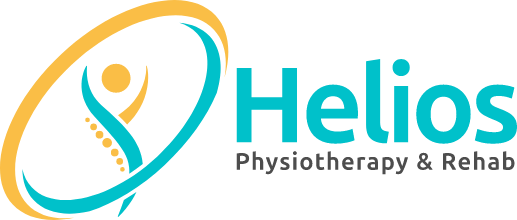 Don’t let your BACK PAIN slow you down!
Don’t let your BACK PAIN slow you down!
Low back pain is one of the leading causes of Disability worldwide. Low back pain can lead to disability when it affects a person’s ability to perform daily activities or work. The degree of disability can vary depending on the severity and duration of the pain, as well as the individual’s occupation, lifestyle, and social support.
It can result in significant limitations in physical function, such as reduced mobility, difficulty standing or walking, and limitations in performing household or occupational tasks. Low back pain can also lead to psychological distress, such as anxiety, depression, and reduced quality of life.
Combination of Physiotherapy, Chiropractic Care and Massage Therapy plays Vital Role in the management of BACK PAIN. All the therapies are Natural, Drug free and Evidence-based treatments that is designed to help you to treat the Cause your Back Pain instead of just masking the symptoms. Physiotherapy helps to improve Movements and Strength in the back, which can help to improve your functions.
DIFFERENT CAUSES OF UPPER BACK PAIN/LOW BACK PAIN/ MID BACK PAIN:
- Muscle Strains, Fascial & Ligament Sprains: These are the most common causes of back pain and occur when the muscles or ligaments in the back are stretched or torn.
- It could be due to Motor Vehicle Accidents (MVA), Workplace Injuries (WSIB), Snow Shovelling Injuries, Sports Injuries, Poor Posture or Ergonomics, Slip and Falls, Repetitive Strain Injuries, etc.
- Herniated or Bulging Discs: The discs in the spine can become compressed or slip out of place, causing pressure on the nerves in the back causing radiating symptoms in arms or legs and pain.
- Arthritis or Degenerative Disc Diseases: Arthritis can affect the spine and cause inflammation and pain.
- Facet Arthropathy is a condition that involves degeneration of the facet joints in the spine, which are the small joints between the vertebrae that provide stability and allow for movement of the spine.
- Facet Arthropathy can result in pain, stiffness, and restricted range of motion in the affected area of the spine. It is mostly seen in the lower back (Lumbar Facet Arthropathy) and neck (Cervical Facet Arthropathy).
- Osteoporosis: This condition weakens the bones, making them more susceptible to Fractures and Compression fractures in the spine.
- Sciatica: Sciatica is a condition that occurs when the sciatic nerve, which runs from the lower back to the feet, is compressed or irritated.
- Scoliosis: Scoliosis is a condition where the spine curves abnormally, causing back pain.
- Spinal Stenosis: This is a narrowing of the spinal canal, which puts pressure on the nerves and can cause back pain.
- Infections and Tumors: Infections or tumors can cause inflammation in the back and put pressure on the nerves, causing pain.
- Poor Posture: Poor posture can put extra strain on the back muscles and cause pain.
- Pinched Nerves or Radiculopathy: Radiculopathy is a condition that occurs when there is pressure or irritation on a nerve root in the spine, resulting in pain, numbness, tingling, or weakness in the area of the body that the nerve supplies. Radiculopathy can occur in any part of the spine but is most common in the lower back (lumbar radiculopathy) and neck (cervical radiculopathy)
- Trauma: Trauma to the back, such as from a fall or car accident, can cause Compression Fractures or Dislocations in the spine, leading to pain.
WHAT TO EXPECT IN 1st VISIT or INITIAL ASSESSMENT?
- A Physiotherapist/ Chiropractor will first assess your back pain and determine the underlying cause. It’s important to note that in many cases, multiple factors may be contributing to the pain.
- The therapist will provide accurate diagnosis based on this assessment. The physiotherapist will develop a treatment plan that is tailored to your specific needs.
- At Helios Physiotherapy and Rehab we often use combination of treatments, such as Physiotherapy, Chiropractic care, Acupuncture and Massage Therapy, to provide a comprehensive approach to managing back pain.
THERAPIES we offer at HELIOS include in Management of Back Pain include:
- Manual therapy: Manual therapy involves hands-on techniques to relieve pain, improve mobility, and reduce muscle tension. The physiotherapist may use techniques like massage, mobilization, and manipulation to help reduce pain and improve mobility in the back.
- Soft Tissue Release/ Cupping Therapy/ Gua Sha: Soft tissue release (STR), Gua Sha, Scrapping and Cupping Therapy (Tissue Distraction Release-TDR) are some techniques that can be used to treat back pain by targeting and releasing tight muscles and other soft tissues in the affected area. This can help to improve circulation, reduce muscle tension, and promote healing in the affected area.
- Active Release Technique (ART): involves applying pressure to specific points on the affected muscle or soft tissue while the patient moves the affected joint through a range of motion. This can help to release adhesions, reduce muscle tension, and improve circulation in the affected area.
- Shockwave Therapy: shockwave therapy is a non-invasive treatment option for back pain that uses high-energy sound waves to relieve pain and improve mobility. While it may not be suitable for everyone, it can be an effective treatment option for individuals who are experiencing chronic back pain and have not found relief with other treatments.
- Laser Therapy: Laser therapy uses low-level laser energy to penetrate the skin and stimulate the body’s natural healing response. The light energy triggers a process called photo biomodulation, which reduces inflammation and pain and promotes tissue repair. Laser therapy has been shown to be effective in reducing pain and inflammation associated with back pain. It can also improve range of motion and promote tissue healing.
- Electrical stimulation: Electrical stimulation involves the use of electrical currents to relieve pain and improve muscle function. For example, a physiotherapist may use transcutaneous electrical nerve stimulation (TENS) to relieve pain in the back.
- Acupuncture: acupuncture is a form of traditional Chinese medicine that can be effective in the treatment of back pain. It works by stimulating the nervous system and releasing natural pain-relieving chemicals in the body, which helps to reduce pain and improve mobility in the back.
- Stretching exercises: Stretching exercises can help improve flexibility, reduce muscle tension, and improve posture. The Physiotherapist, Osteopath or Chiropractor may prescribe exercises to stretch the hamstrings, hips, and lower back, which can help reduce pressure on the lower back and alleviate pain.
- Strengthening exercises: Strengthening exercises can help improve muscle strength, stability, and support for the back. The physiotherapist or Chiropractor may prescribe exercises to strengthen the core muscles, such as the abdominal muscles and the muscles of the lower back.
- Postural re-education: Postural re-education involves learning and practicing good posture habits. A Physiotherapist/ Chiropractor may teach individuals how to sit, stand, and move in a way that reduces stress on the back.
- Prevention of Future Back Pain: Physiotherapist can also help you to prevent future back pain by educating you on proper posture, body mechanics, and lifestyle changes that can help you to reduce the risk of injury. This can include things like improving ergonomics at work, maintaining a healthy lifestyle, and engaging in regular physical activity.
Physiotherapy is FIRST treatment of choice for NATURALLY HEALING the back pain. YOU DO NOT NEED a DOCTOR’S REFFERAL TO COME AND SEE A PHYSICAL THERAPIST. By offering a NATURAL, DRUG FREE and EFFECTIVE HEALING SOLUTION, we can help you to manage your pain and improve your Daily Activities and Quality of Life. If you are experiencing back pain, it is important to talk to our Therapist at HELIOS PHYSIOTHERAPY AND REHAB.
